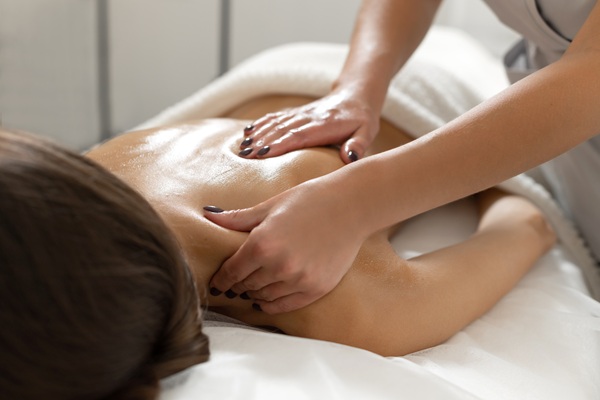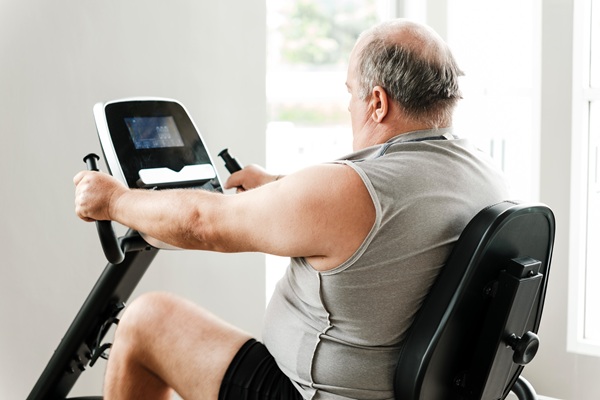Hip Pain TreatmentNewport Beach, CA
Hip pain can be extremely painful and discomforting as the hip is a large and useful body part. It is responsible for much of our movement and can significantly limit a person’s range of motion and overall activity, especially following an injury. Hip pain can also result from various health conditions. Seeking immediate medical care and physical therapy can help you recover faster and start enjoying the things you love again.
At Orange County Physical Therapy, we offer hip pain treatments for patients experiencing pain or discomfort or who have recently suffered a hip injury. Our team can properly diagnose your case and determine the type of treatment or therapy that can best help you. To learn more about a procedure or schedule an appointment, call (949) 299-0297 today.
Understanding Hip Pain
The hip is the body's largest ball and socket joint. It falls between the lower back and legs, consisting of two bones: the thigh bone (or femur) and the pelvis. The pelvis consists of three bones, the ilium, ischium, and pubis. The hip provides mobility and stability, allowing the entire lower body to move in three planes of motion. It also provides a shock absorption function to the torso and upper body.
The hip joint can withstand a good amount of wear and tear. However, it does tend to break down and can cause significant amounts of pain and discomfort. As we age and from extended use, the cartilage and tendons in the hip wear down over time. Hip pain typically stems from an injury or health condition that affects the joints, ligaments, tendons, or muscles in the region. Treatment for hip pain will depend on the type, cause, and severity of the patient’s case.
Check out what others are saying about our Hip Pain Treatment services on Yelp: Hip Pain Treatment Newport Beach
Common Causes of Hip Pain
Hip pain can result from a variety of factors. Some of the most common causes of hip pain include:
- Strain: One of the most common causes of hip pain is straining the muscles or tendons. Repeating the same activities can cause inflammation in the tendons and muscles and may prevent the hips from functioning the way they normally would.
- Tearing the labrum: The labrum is a ring of cartilage around the hip joint. This cartilage acts as a rubber seal to hold the ball at the top of the thigh in place in the hip socket. People who constantly make a twisting motion are more likely to tear this cartilage.
- Tendonitis: The tendons of the hip may become inflamed and cause pain in the hip, caused by the stress of overuse.
- Bursitis: A condition that causes inflammation of the bursa. The bursa are fluid-filled sacs that act as cushions between the bones and soft tissues.
- Arthritis: A condition in which inflammation in the hip bone causes the cartilage to wear down, resulting in pain, reduced range of motion, and stiffness.
- Fractures: Bones become brittle and weak with age. Weakened bones are more susceptible to falls and breaks upon falling. Fractures can cause severe hip pain.
- Cancers: Various forms of cancer can spread to the hip region and cause pain.
- Avascular necrosis: A condition that occurs due to decreased blood flow or dead bone tissue. It may result from overuse, fracture, dislocation, or long-term use of high-dose steroids (such as prednisone).
Symptoms of a Hip Injury or Condition
Hip problems often cause pain and discomfort. While the obvious areas of discomfort are the inside and outside of the hip joint, patients may also feel pain in the thigh, groin, buttocks, and back. The pain may worsen when performing physical activity, and patients may also notice a reduced range of motion.
Severe pain and symptoms that do not dissipate on their own often indicate a larger issue at hand. It is important to seek immediate medical care when experiencing pain or any of the symptoms above. When left untreated, hip pain can cause more complicated issues in the buttocks, lower back, midshaft, and legs. It can also make a person more vulnerable to falls and breaks.
Diagnosing and Treating Hip Pain
To properly diagnose the source of a patient’s hip pain, a doctor will likely order imaging tests, such as X-rays and magnetic resonance imaging (MRI). An X-ray can reveal an excess of bone on the femoral head or neck and the acetabular rim. An MRI can reveal fraying or tears of the cartilage and labrum. Once they determine the cause of the pain, we will put together a treatment plan that addresses the patient’s unique needs. In most cases, physical therapy is coupled with other treatments and, at times, medication.
Physical therapy can be a great means of reducing inflammation and pain in the hip. Low impact exercises, resistance training, and stretching are excellent ways to help move and stretch the hip. Physical therapy can also help improve the range of motion. Physical therapy can be the start to improving a patient’s hip condition. We can help patients get started on a program that works for their condition and provide them with an at-home program so that they can continue working and managing their symptoms on their own time.
Benefits of Physical Therapy for Hip Pain
Physical therapy is a great way to get back on your feet when an injury or degeneration stands in the way of fitness. We believe that our unique ability to identify, diagnose, and treat patients’ movement problems are key to helping them regain movement, mobility, and independence. In many cases, physical therapy can decrease or eliminate the need for medication or surgery.
The benefits of physical therapy specifically for hip pain include increased range of motion, improved function, enhanced strength and mobility, and significantly reduced pain and associated symptoms. Physical therapy also trains the body to use its own power to heal itself. Continuing these practices at home allows patients to manage their condition and prolong the hip’s lifespan.
Schedule a Visit Today
Hip pain consultations and treatments are available at our office. The Orange County Physical Therapy team looks forward to treating you and helping you get back to doing what you love. Call our office at (949) 299-0297 to learn more or schedule an appointment.
Frequently Asked Questions About Hip Pain
Q. How does physical therapy help relieve hip pain?
A. Physical therapy helps provide safe, effective, and non-invasive treatment for patients suffering from hip pain. The exercises, including stretching and strengthening, balance training, joint mobilization, and manual or massage therapy, allow the joint to regain function and facilitate proper movement.
Q. How can I assess the severity of my hip pain?
A. Many people suffer from hip pain from time to time. However, it is important to seek immediate medical care if any of the following symptoms are present: pain is constant, the joint appears deformed, inability to move the leg or hip, inability to bear weight on the affected leg. Intense pain, sudden swelling, or any signs of infection (fever, chills, redness).
Q. How can I identify the source of my hip pain?
A. Hip pain can be determined if the pain stems from the front of the hip/groin region and radiates down the thigh to the knee. If it stems from the buttocks to the hamstring, it is likely a spine or back issue. Many people are unable to distinguish the pain themselves. Getting a medical diagnosis is the best bet to receiving proper treatment.
Q. Can exercise help alleviate my hip pain?
A. Running and jumping should be avoided as they can worsen hip pain in patients with arthritis and bursitis. Walking can help keep the joint and bones moving and alleviate some pain over time. However, every patient’s case is different and they should not attempt any physical activity without a doctor’s approval.
Q. What are the first signs of a hip condition?
A. The first signs that typically appear can include pain in the hip, buttocks, groin, and legs. Other common early signs include stiffness, limping, swelling, and tenderness. Some patients may experience other less common symptoms. Be sure to check with your doctor or therapist and discuss all of the symptoms you are experiencing, even if they come and go.
Contact Us
Orange County Physical Therapy OCPT is located at 2135 Westcliff Dr. Suite 203 Newport Beach, CA 92660.





